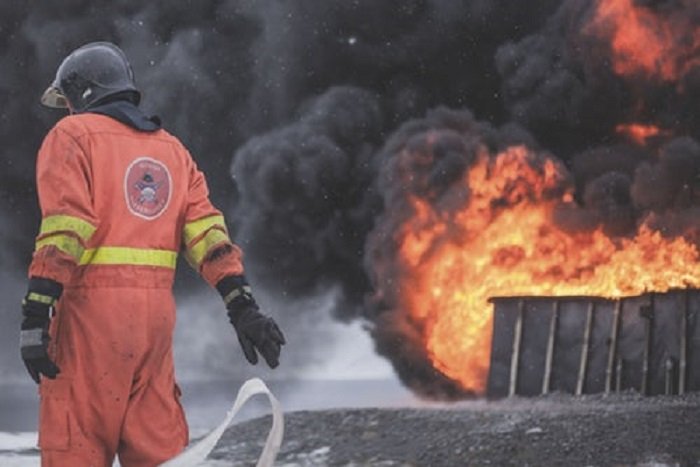
Fireproof clothing
The persistent fire resistance of textiles is an unsolved problem. It is even more problematic when textiles made from fibers of natural origin such as cellulose fibers (cotton for instance) are concerned. Flame retardant finishing of cotton fabrics and garments becomes necessary to improve human safety under many circumstances. Most of the efforts in the area of textile flame retardant finishing have focused on reducing the flammability of cotton. Indeed, for this type of fiber, the fire retardant property can only be conferred by means of a surface treatment of the material.
Flame retardants, which are chemicals added to materials both to prevent combustion and to delay the spread of fire after ignition, are used in textiles and polymers since the 1960s. Flame retardants are used more and more and may have different compositions. They may contain halogens (bromine and chlorine), phosphorus, nitrogen, metals, minerals based on aluminum and magnesium, or they may be based on borax, antimony trioxide, molybdenum, or the flame retardants may be a nano composite.
Cotton is one of the most flammable fibers as well with low limiting oxygen index (LOI) of 18.4 % and onset of pyrolysis at 350 ˚C. However, its thermal functionality can be modified by making them flame retardant through surface treatment. Flame resistance is a desirable property that can be imparted to fabrics by means of chemical finishing. Flame retardant cottons are usually produced by chemical treatment in the textile finishing process, which, depending on the process applied, generates flame retardant properties with varying degrees of durability against various laundering processes
The most common flame retardant systems for rendering cotton fabrics flame retardant are halogen-containing compounds. However, halogen-based compounds are not environmentally friendly because they generate toxic gases, which can be endocrine disruptive.
Reducing the flammability of fibrous materials, such as textile fibers and fabrics, has been one of the major challenges facing the scientific and industrial communities.
References:
Mahmood Ghoranneviss, Sheila Shahidi, Flame Retardant Properties of Plasma Pretreated/Metallic Salt Loaded Cotton Fabric Before and After Direct Dyeing, J Fusion Energ, DOI 10.1007/s10894-013-9642-9

